Sapphire: A Guide to the Stunning September Birthstone
Sapphires are prized gemstones, celebrated for their captivating blue color and historical prominence. This comprehensive guide delves into the various colors and types of sapphires, their rich history and symbolism, and how to select and care for sapphire jewelry. As the birthstone for September, sapphires hold special significance for many.
Key Takeaways
-
Sapphires have a rich history tied to spirituality and protection, being prized by various cultures for their divine connections.
-
They come in a range of colors beyond blue, including pink, yellow, and green, each affecting their beauty and market value based on saturation and clarity.
-
Sapphires symbolize wisdom and loyalty, making them popular choices for engagement rings and jewelry, while also believed to offer protection against negative energies.
The Rich History of Sapphires
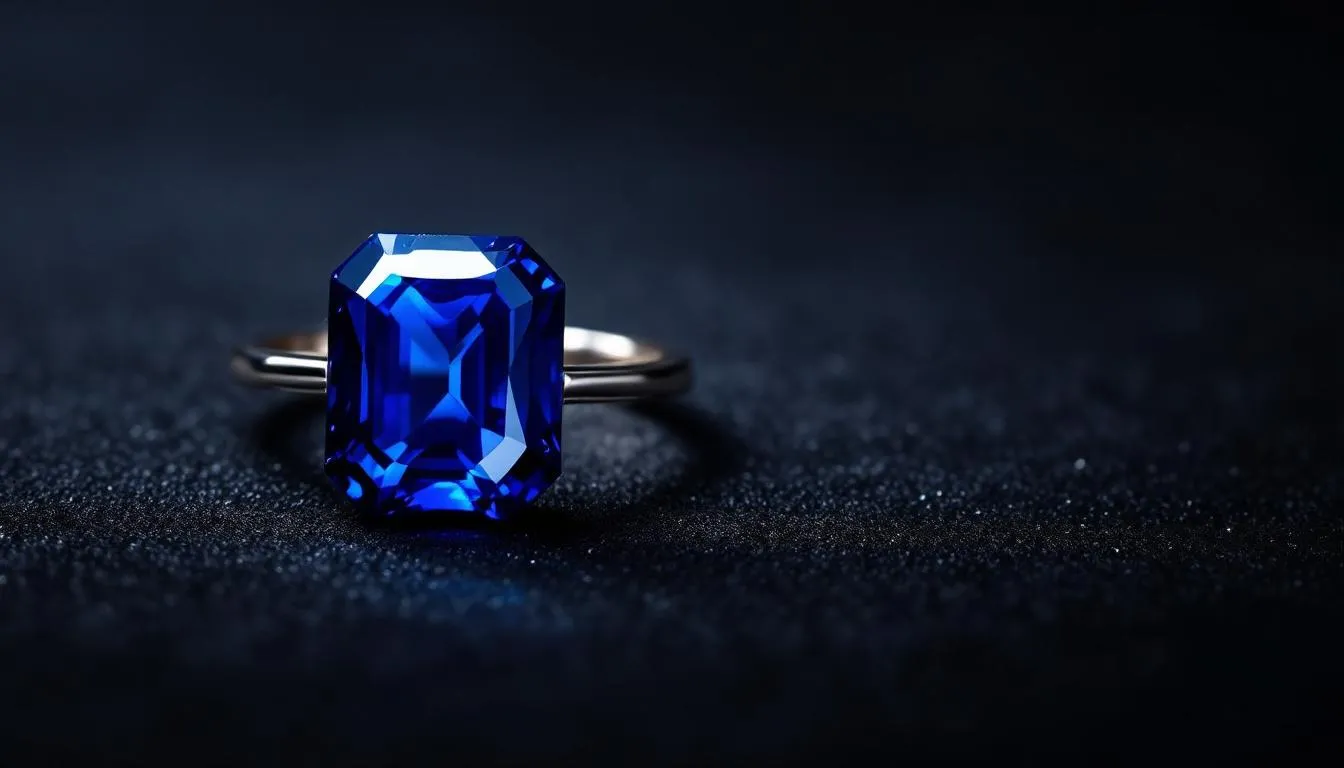
Sapphires, with their celestial allure, have been revered since ancient times, symbolizing divine favor and heavenly grace. In the Middle Ages, these gemstones were believed to represent the heavens, often adorning the robes of clergy and royalty. The deep blue hues of sapphires were thought to bring protection and spiritual insight, making them a coveted jewel among monarchs and spiritual leaders alike.
The ancient Greeks wore sapphires when consulting oracles, seeking guidance and wisdom from the divine. Different cultures valued sapphires in various ways: The word 'sapphire' typically refers to the blue variety unless specified otherwise, highlighting its prominence and association with the color blue throughout history.
-
In Buddhism, sapphires were cherished for their spiritual enlightenment properties.
-
Hindus incorporated sapphires into their religious practices, believing in their power to connect with the divine.
-
Christian monarchs valued sapphires as protective amulets, incorporating them into their ecclesiastical jewelry to shield against harm and envy.
The allure of sapphires extended to the ancient Hebrews, who believed that the Ten Commandments were inscribed on sapphire tablets. This historical reverence for sapphires is further highlighted by the Kashmir region, known for producing the world’s finest violet-blue sapphires, a testament to their enduring beauty and significance. Kashmir Blue sapphires are extremely rare today, as the mines in this region have been largely exhausted since the early 20th century.
Sapphires are formed deep within the earth, and their natural qualities and vibrant colors are shaped by the unique geological conditions present during their development.
Sapphire Colors and Varieties
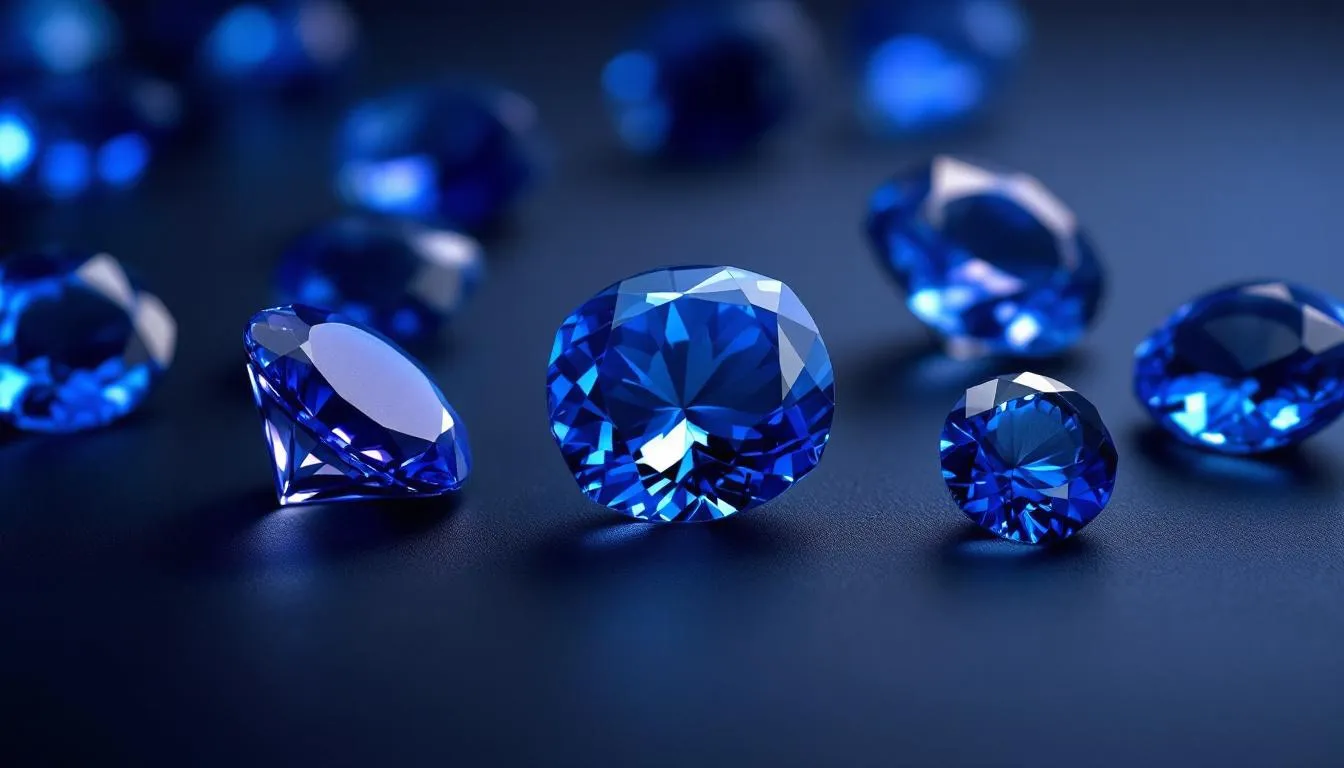
Color
One of the most fascinating aspects of sapphires is their incredible range of colors. While blue sapphires are the most recognized, these gemstones can be found in a stunning spectrum, including pure green sapphires, which are extremely rare. Teal sapphires, a mix of blue and green, have recently gained popularity for their unique and captivating appearance. Sapphires exhibit a full range of colors except red, which is reserved for rubies, another variety of the corundum mineral family.
-
pink
-
yellow
-
green
-
purple
-
orange
These variations are collectively known as fancy sapphires, with each hue adding to the stone’s allure and versatility.
Variation
The color of a sapphire is primarily determined by the presence of trace elements like iron and titanium. The intensity and purity of these colors significantly influence the stone’s value, with deep, vibrant hues generally commanding higher prices. For instance, yellow sapphires can range from light greenish-yellow to deep orange, with the most valuable being a vivid yellow. Green sapphires, although rare, often exhibit a mix of yellow and blue hues, making them less desirable than their blue counterparts. Pink sapphires, on the other hand, owe their captivating hues to trace amounts of chromium.
One of the most captivating varieties is the color-change sapphire, which exhibits different colors under various lighting conditions. Star sapphires, characterized by a star-like phenomenon caused by tiny needle-like inclusions, are another unique variety that adds to the gemstone’s mystique. The six-rayed star effect in star sapphires is caused by rutile inclusions, and the value of these stones depends on the sharpness and visibility of the star.
Padparadscha sapphires, with their unique blend of pink and orange hues, often described as having a salmon or sunset color, are among the rarest and most sought-after. Pink sapphires, ranging from light pink to deep purple, also offer a delightful alternative to traditional blue sapphires, catering to diverse tastes and preferences. Hot pink sapphires are generally the most valuable, while soft pinks are popular and often more affordable. The most prized sapphires are the pink-orange padparadscha and the velvety cornflower blue.
The hue, saturation, and tone of a sapphire are crucial in determining its market value, with vivid and uniform colors being the most prized.
The Symbolism and Meaning of Sapphires
Sapphires have long been associated with wisdom, loyalty, and inner peace. Throughout history, they have been symbols of sincerity, truth, and fidelity, making them a popular choice for meaningful jewelry pieces. Their deep blue color is often linked to the heavens, embodying a sense of divine connection and spiritual clarity.
In addition to their symbolic meanings, sapphires are believed to possess protective qualities. They are thought to shield the wearer from negative energies and harmful influences, providing a sense of spiritual protection. This belief in their protective power extends to personal and spiritual growth, with sapphires promoting emotional healing and mental clarity.
Wearing sapphire jewelry is also believed to:
-
Foster a connection with divine inspiration and spiritual awakening.
-
Protect against envy and harm, as thought in ancient societies, solidifying their status as powerful amulets.
-
Symbolize nobility and enduring elegance, having adorned royalty over the centuries.
Famous Sapphires in History
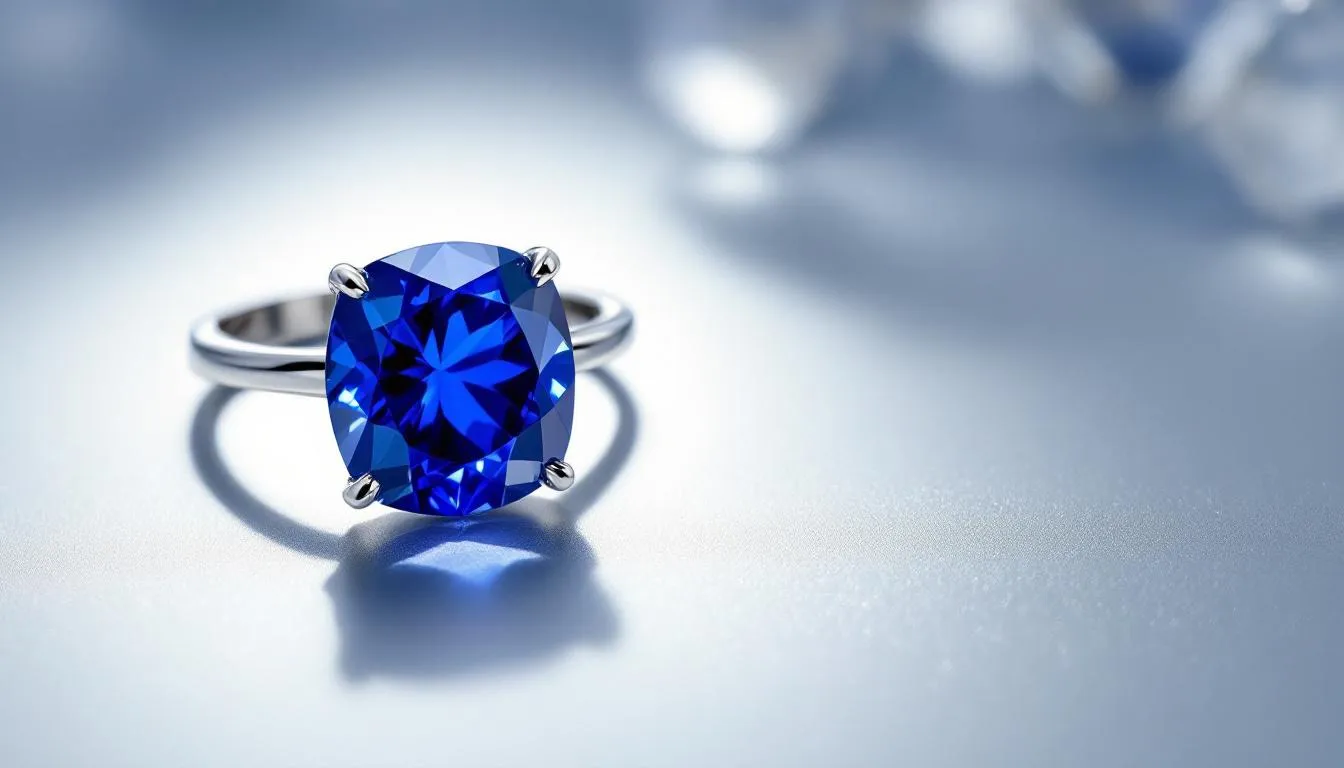
One of the most iconic sapphires in modern history is the blue sapphire engagement ring given by Prince Charles to Lady Diana in 1981. This stunning ring, featuring a 12-carat oval Ceylon sapphire surrounded by 14 diamonds and set in white gold, captured the public’s imagination and reinforced the association of sapphires with royal love.
The story of this ring doesn’t end with Princess Diana. After her passing, the engagement ring was later worn by Kate Middleton when Prince William proposed, continuing its legacy as a symbol of enduring love and royal heritage. This ring was inspired by a sapphire brooch owned by Queen Victoria, adding another layer of historical significance to its story.
Modern Birthstones: The Evolution of Birthstone Traditions
Birthstone traditions have evolved over centuries, with the cherished list of modern birthstones thoughtfully established by the National Association of Jewelers in 1912. This list assigns a unique gemstone to each month, nurturing a beautiful tradition that continues to inspire jewelry lovers worldwide.
These modern birthstones are often set in exquisite metals such as sterling silver, warm gold, or romantic rose gold, creating handcrafted gifts that honor a loved one's special birth month. The tradition reflects evolving tastes and customs, incorporating both classic and contemporary stones to celebrate life's milestones.
January Birthstone: Garnet – The Stone of Enduring Love
January's birthstone, garnet, is known for its deep red shades and is often associated with protection, vitality, and everlasting love. Garnets come in a variety of colors but are most commonly recognized for their rich red hues.
Garnet jewelry, frequently crafted in rose gold or sterling silver, embodies warmth and strength. Its historical significance and timeless beauty make it a cherished gift for those born in January.
October Birthstone: The Enchanting Opal
October's birthstone, the opal, is renowned for its mesmerizing play-of-color, displaying iridescent flashes that captivate the eye. Opals symbolize hope, creativity, and transformation, making them a meaningful choice for those born in October.
Opal jewelry, often set in rose gold or sterling silver, showcases the stone's unique visual appeal. Its vibrant colors and symbolic meanings make it a cherished gem for personal adornment and thoughtful gifts.
December Birthstone: The Allure of Tanzanite and More
December offers a trio of birthstones, including the striking tanzanite, turquoise, and zircon. Tanzanite, discovered only in Tanzania, dazzles with its blue-violet hues, reflecting twilight skies and symbolizing spiritual awakening and transformation.
These December birthstones are popular choices for jewelry crafted in warm gold, sterling silver, or rose gold, offering a variety of styles that celebrate the month's unique beauty and significance.
August Birthstone: Peridot and Spinel – A Dynamic Duo
August's birthstones include the vibrant peridot and the captivating spinel. Peridot's refreshing green energy symbolizes strength and healing, while spinel offers a range of colors from fiery reds to cool blues, representing energy and revitalization.
Jewelry featuring these stones often highlights their vivid colors, set in metals like rose gold and sterling silver, making them versatile and meaningful gifts for those born in August.
July Birthstone: The Passionate Ruby
July's birthstone, the ruby, is celebrated for its rich, vibrant red hue symbolizing passion, courage, and love. Rubies have been treasured throughout history for their association with vitality and protection.
Ruby jewelry, whether set in classic gold, rose gold, or sterling silver, adds a fiery elegance to any collection. Its enduring symbolism makes it a popular choice for meaningful gifts and personal treasures.
Rose Gold and Sapphire Jewelry: A Perfect Match
Rose gold's warm, romantic tones beautifully complement the vibrant colors of sapphires. This combination has become increasingly popular in modern jewelry designs, offering a fresh and elegant alternative to traditional yellow gold or sterling silver settings.
Whether in engagement rings, necklaces, earrings, or bracelets, rose gold settings enhance the rich hues of sapphires, creating pieces that are both timeless and contemporary. The pairing symbolizes love, passion, and sophistication, making it a favored choice among jewelry enthusiasts.
How to Choose a Sapphire
Selecting the perfect sapphire involves considering several key factors, commonly referred to as the 4Cs:
-
Color
-
Clarity
-
Cut
-
Carat weight
Each of these elements plays a crucial role in determining the gem’s overall beauty and value. Whether you’re choosing a sapphire for an engagement ring or a piece of statement jewelry, understanding these factors can help you make an informed decision.
The color of a sapphire and tanzanite is often the most significant determinant of its value. The presence of trace elements like iron and titanium can create a range of hues, with deep, vibrant colors generally being the most desirable.
Clarity refers to the presence of inclusions or natural imperfections within the stone. While some inclusions can enhance a sapphire’s uniqueness, others may detract from its brilliance, affecting the overall details.
The cut of a sapphire is essential in showcasing its natural beauty. A well-cut stone maximizes brilliance and sparkle, ensuring that the gem reflects light beautifully. Popular cuts include:
-
Oval
-
Round
-
Cushion
-
Pear
Each offering a unique aesthetic appeal. By carefully considering these factors, you can select a sapphire that not only meets your aesthetic preferences but also holds significant value.
Caring for Your Sapphire Jewelry
Proper care and maintenance are essential to keep your sapphire jewelry looking its best. Cleaning sapphire jewelry can be done effectively by:
-
Using warm soapy water and a soft brush
-
Avoiding harsh chemicals like alcohol or acetone that could damage the stone
-
Using ultrasonic and steam cleaning, provided the sapphires do not have fractures or inclusions
To prevent damage to sapphire jewelry, consider the following tips:
-
Remove sapphire jewelry before engaging in activities like bathing or household chores.
-
Store sapphires separately from other gemstones to prevent scratches and keep your jewelry pristine.
-
Regularly check the settings of your sapphire jewelry to ensure the stones are secure and maintain their brilliance over time.
Synthetic vs. Natural Sapphires
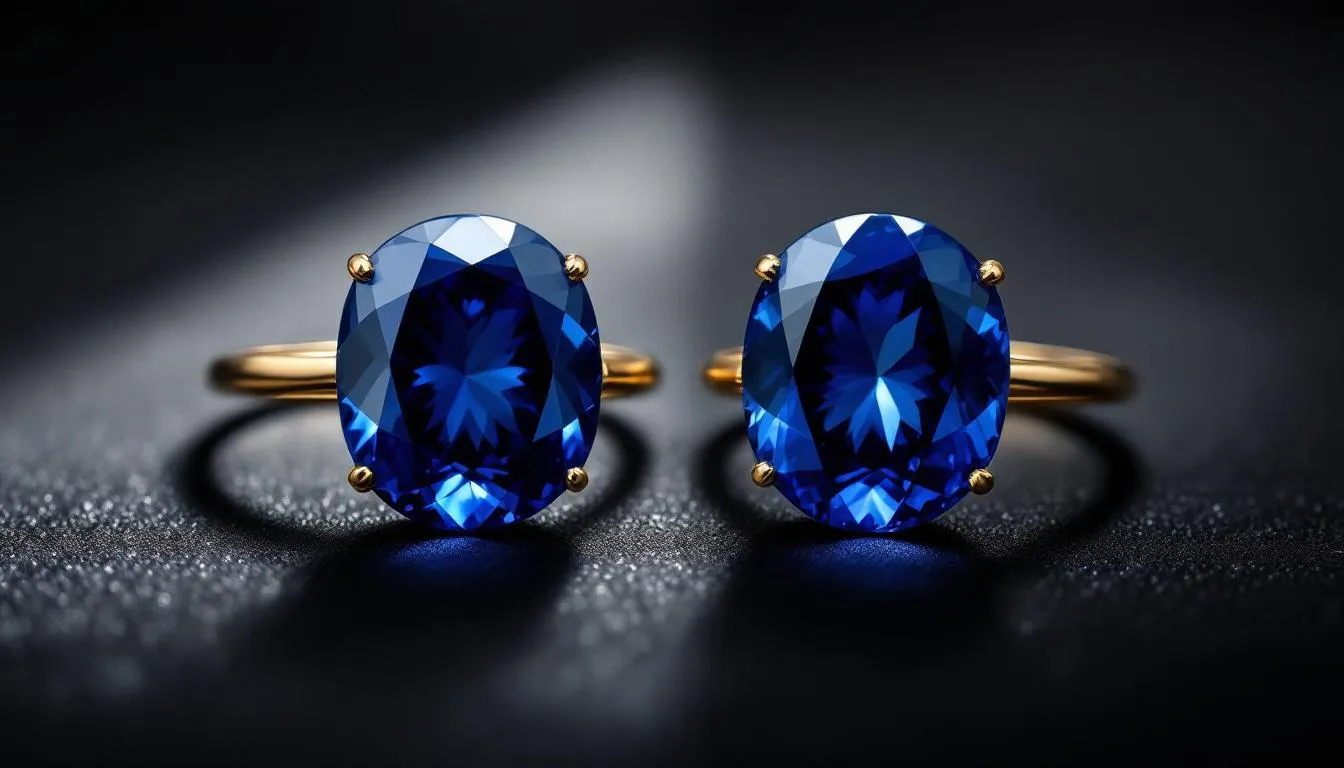
When considering sapphires, it’s important to understand the differences between synthetic and natural stones. Synthetic sapphires, created in laboratories using methods like the Verneuil process, are typically flawless with no inclusions, resulting in a perfectly uniform color. Natural sapphires, on the other hand, often contain inclusions such as air bubbles and other imperfections, which can add character and uniqueness to each stone. Sapphire is also used in technology for its exceptional hardness, optical clarity, and resistance to high temperatures, making it a valuable material in various industrial applications. Additionally, sapphire's exceptional hardness allows for the creation of extremely sharp and durable scalpels for surgical procedures, further showcasing its versatility.
While synthetic sapphires offer a more affordable and ethically sourced alternative, many people still prefer natural sapphires for their inherent beauty and rarity. The choice between synthetic and natural sapphires ultimately depends on personal preference, budget, and the desired qualities of the gemstone. Beyond jewelry, sapphire is also used in certain medical implants due to its biocompatibility and resistance to corrosion, highlighting its importance in the medical field.
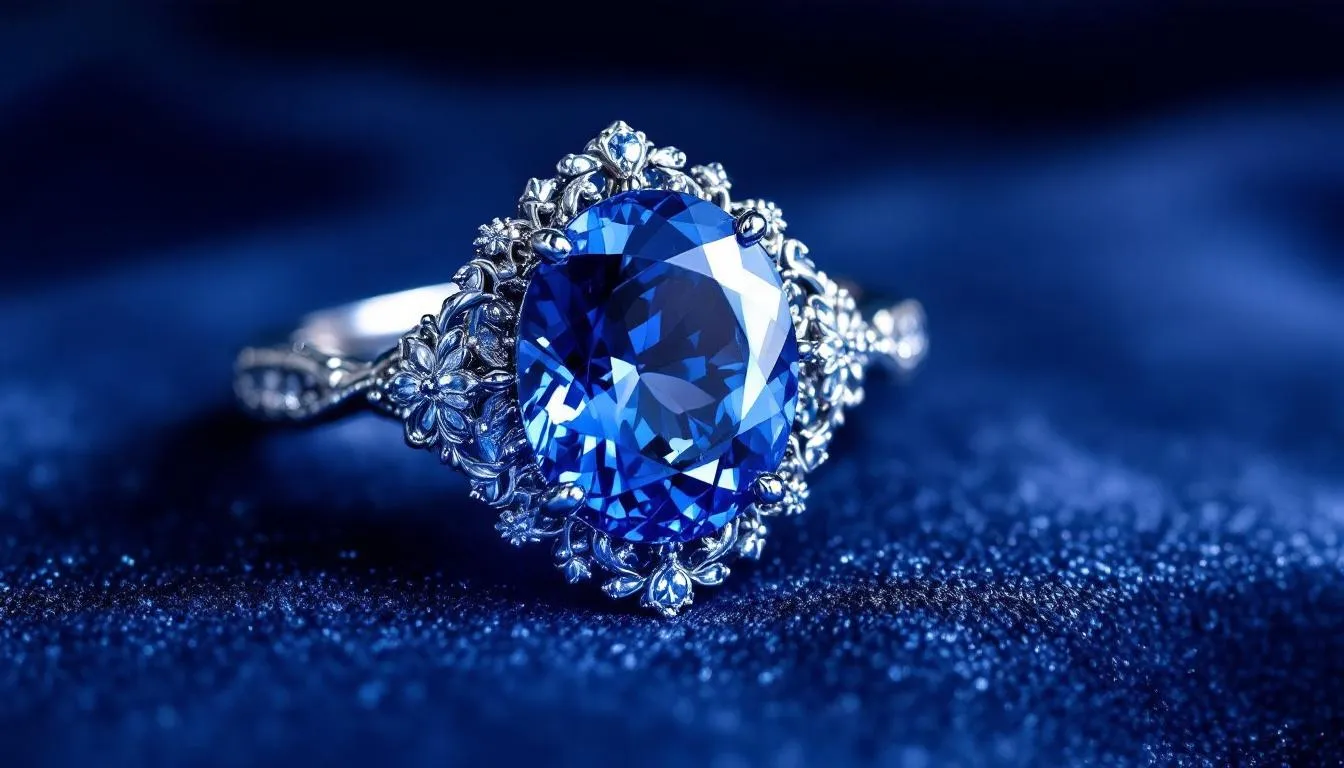
Birthstone Significance: September Birthstone
As the birthstone for September, sapphires hold a special place in the world of gemstones. They are associated with traits such as luck, protection, and other positive qualities, making them a meaningful choice for those born in this birth month.
Garnet, the birthstone for January, is known for its deep red hues and is often associated with love and energy. As the january birthstone, garnet comes in a range of colors and is celebrated for its symbolic meanings of protection, vitality, and passion, with a rich historical significance as a gemstone believed to bring strength and safety. January's birthstone is cherished not only for its decorative beauty but also for its meaningful qualities, making it a significant choice for those born in January.
Amethyst is the birthstone for February, celebrated for its healing and spiritual significance gold plated necklace with dark amethyst pendant Amethyst Aura: Gold-Plated Necklace rich purple hues and its association with clarity and calmness.
Aquamarine is the birthstone for March, admired for its tranquil blue-green tones and its connection to serenity and courage.
Diamond is the birthstone for April, renowned for its unmatched brilliance and its symbolism of strength and eternal love.
Emerald is the birthstone for May, cherished for its vibrant green color and its association with renewal and growth, is also at the [forefront of modern birthstone jewellery trends for 2025](https://sarasbeads.co.uk/blogs/article/top-10-sterling-silver-jewellery-trends-for-2025).
Pearl is one of three birthstones for June, symbolizing purity and wisdom, and is unique as an organic gem formed naturally within oysters and mussels. Alexandrite, another June birthstone, is prized for its remarkable color-changing properties, shifting from green in daylight to purplish-red under incandescent light. Moonstone, the third birthstone for June, displays an ethereal adularescence and milky appearance, and is associated with intuition and new beginnings.
Ruby, the birthstone for July, symbolizes passion and vitality, adding a fiery contrast to sapphire’s serene qualities.
Peridot, with its vibrant green hue, is the modern birthstone for August, preceding sapphire in the calendar of birthstones. Spinel is also recognized as an August birthstone, and together these august birthstone options offer a variety of colors and symbolism, with peridot representing strength and spinel symbolizing hope, both carrying historical significance for those born in August.
The tradition of wearing birthstones dates back centuries, and sapphires continue to be revered for their beauty and significance. Whether gifted to a loved one or worn as a personal talisman, sapphires embody the timeless elegance and profound symbolism that make them a cherished birthstone for September.
Opal, one of the birthstones for October, is known for its mesmerizing play-of-color, adding a unique and vibrant option to the birthstone calendar. Additionally, opals are often associated with creativity and emotional expression, making them a meaningful choice for those born in October. Opal is one of two birthstones for October. The october birthstone, opal, is especially admired for its iridescent appearance and play-of-colour, symbolizing hope, creativity, and transformation.
Citrine is one of two birthstones for November, valued for its warm golden hues and its connection to prosperity and joy. The first list of modern birthstones was adopted in 1912 by the National Association of Jewelers, solidifying the tradition of associating specific gemstones with each month. Modern lists of birthstones have changed over time, reflecting evolving tastes and customs.
Turquoise is one of three birthstones for December, cherished for its distinctive blue-green color and has been used for centuries as a protective talisman across many cultures. Tanzanite, another December birthstone discovered only in Tanzania, displays remarkable blue to violet hues with pleochroism, making it one of the most sought-after gems of the modern era. Zircon, the third birthstone for December, is available in various colors but most popular in blue, known for its brilliant sparkle and fire, and symbolizes prosperity and honor.
Summary
In summary, sapphires are much more than just beautiful gemstones; they are steeped in rich history, cultural significance, and profound symbolism. From their diverse colors and varieties to their protective and spiritual properties, sapphires have captivated humanity for centuries. Whether you’re drawn to their deep blue hues or the unique appeal of fancy sapphires, these gems offer something truly special for everyone. Sapphires are corundum gems, a mineral family known for its exceptional hardness and vibrant colors. Among the most prized varieties are Royal Blue sapphires, which feature a deep, vivid blue color with violet or purple undertones, adding to their allure and value. Ceylon Blue sapphires come in a range of light to rich blues with excellent saturation and sparkle. Sapphire's transparency across a broad spectrum of light makes it ideal for optical windows in high-precision instruments, further emphasizing its multifaceted importance. Synthetic sapphire is also used as a substrate for growing semiconductors, particularly for blue and white LEDs made from Gallium Nitride, showcasing its role in modern technology. Pearl, one of three birthstones for June, complements sapphire's elegance with its soft, lustrous beauty. Tanzanite, one of three birthstones for December, is celebrated for its striking blue-violet hues, offering a modern and exotic option for those born in this month.
Choosing and caring for sapphire jewelry requires an understanding of key factors like the 4Cs, as well as proper maintenance to ensure their longevity. Whether you opt for natural or synthetic sapphires, their timeless allure and significance make them a perfect choice for personal adornment or as a cherished gift. Sapphire is transparent to infrared light and is used for durable windows on sensors in harsh conditions, further showcasing its versatility and value beyond jewelry. Synthetic sapphire is also widely used for protective display covers on smartwatches and smartphones due to its scratch resistance, making it a practical choice in modern technology. Embrace the magic of sapphires and let their beauty and symbolism enhance your life.
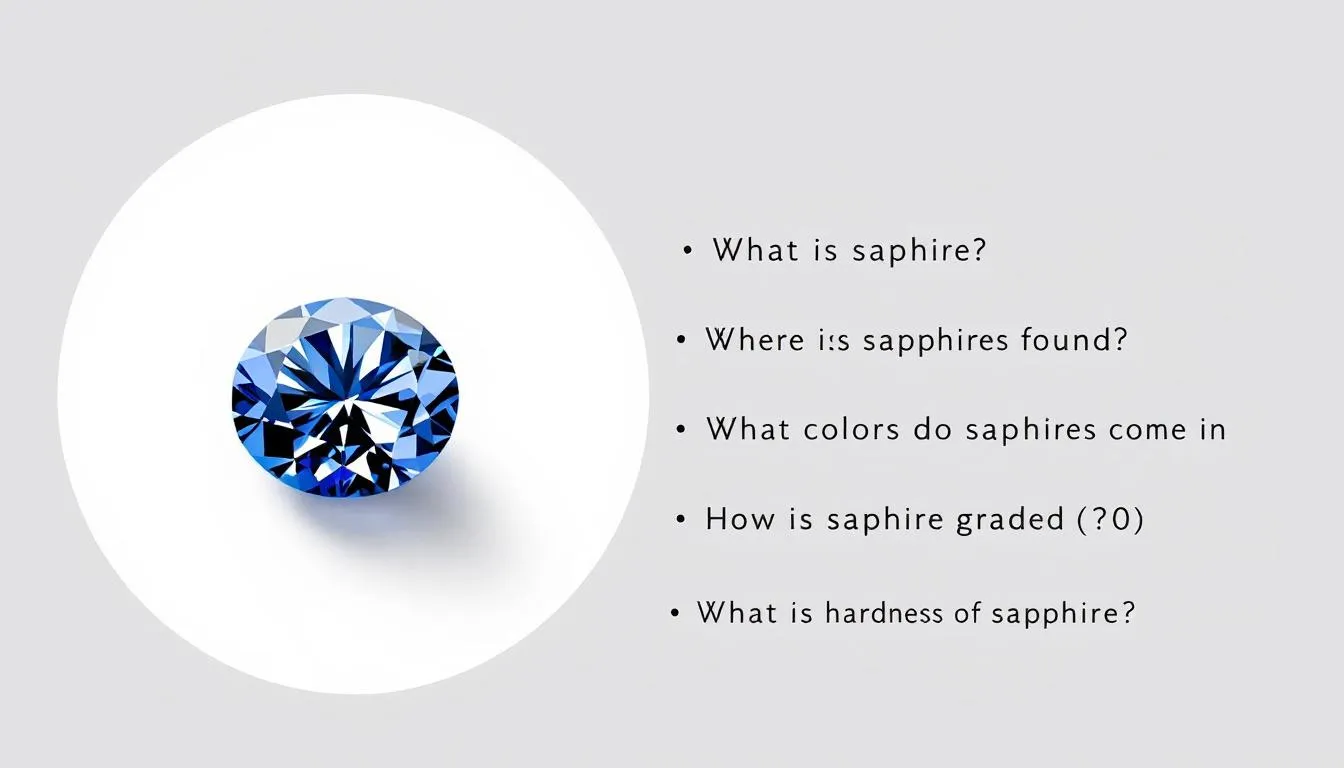
Frequently Asked Questions (FAQs)
What are modern birthstones and how are they chosen?
Modern birthstones are gemstones officially designated to represent each month of the year, as established by the National Association of Jewelers in 1912. This list reflects evolving tastes and customs, incorporating both traditional stones and newer additions to create a meaningful range of gems. For example, garnet is the traditional January birthstone, known for its rich red hues, while tanzanite was added more recently as a December birthstone. These stones are often set in jewelry crafted from gold, silver, or rose gold to create personalized pieces that celebrate a birth month’s unique meaning and history.
What is the significance of the July birthstone?
Ruby, the July birthstone, symbolizes passion, vitality, and protection. Historically, rubies have been cherished for their vibrant red color, often associated with the sun’s energy and life force. Rubies are considered traditional stones that bring courage and love to the wearer. Jewelry featuring rubies, whether set in gold or silver, is prized for its classic beauty and symbolic meaning, making it a popular choice for rings, necklaces, and other adornments.
Can you explain the importance of January's birthstone?
January's birthstone, garnet, is celebrated for its deep red shades and association with protection and vitality. Garnet jewelry, frequently crafted in warm yellows of gold or sterling silver, is thought to bring strength and safety to the wearer. The stone’s history dates back to ancient times when it was believed to protect travelers and warriors. Garnet is one of the traditional stones that continue to hold significance in modern birthstone collections.
How do birthstones like amethyst, aquamarine, and topaz differ in meaning and use?
Amethyst, the February birthstone, is known for its calming purple hues and is often associated with purity, clarity, and protection. Aquamarine, the March birthstone, reflects the tranquil colors of the sea and symbolizes courage and serenity. Topaz, one of the birthstones for November, comes in a range of warm yellows and is linked to love, good fortune, and joy. Each of these gemstones has a rich history and is commonly used in various forms of jewelry, including rings, earrings, and pendants, allowing wearers to express personal meaning and style.
What makes pearls unique among birthstones?
Pearls, one of the birthstones for June, are unique because they are organic gems formed within oysters and mussels rather than mined from the earth. They symbolize purity, wisdom, and transformation and are valued for their lustrous appearance. Pearls are often incorporated into elegant jewelry pieces made from silver or gold, adding a timeless and sophisticated touch. Their association with the moon and water gives them a special place in birthstone traditions.
How do sapphires compare to other birthstones in terms of symbolism and jewelry use?
Sapphires, the September birthstone, are renowned for their vibrant blue color and association with wisdom, loyalty, and protection. Unlike some other stones, sapphires come in a broad range of colors, including pink and green, offering versatility in jewelry design. They are prized for their durability and classic beauty, often set in rings, necklaces, and earrings crafted from gold or silver. Sapphires have a rich history of being worn by royalty and spiritual leaders, enhancing their meaning as stones of nobility and divine favor.
What are some examples of birthstones for other months and their meanings?
-
April’s birthstone, the diamond, symbolizes everlasting love, strength, and purity. Diamonds are the most popular gems for engagement rings and fine jewelry.
-
May’s birthstone, emeralds, are associated with renewal, growth, and prosperity. Their vibrant green hues are highly prized in jewelry.
-
October’s birthstones, opal and tourmaline, represent creativity and transformation. Opals are known for their mesmerizing play-of-color, while tourmalines come in a wide range of vibrant colors.
-
August’s birthstones, peridot and spinel, symbolize strength and revitalization. Peridot’s fresh green color is linked to the sun and healing.
These stones, among others, create a diverse and meaningful range of birthstones celebrated worldwide.
How can I care for and wear birthstone jewelry to maintain its beauty?
To protect your birthstone jewelry, it is recommended to avoid exposure to harsh chemicals and extreme temperatures. Regular cleaning with warm soapy water and a soft brush helps maintain the stone’s brilliance. Storing jewelry separately prevents scratches, especially for softer stones like opals and pearls. Wearing birthstone jewelry not only enhances personal style but also connects the wearer to the rich history and meaning behind each gem, creating a cherished form of self-expression.
How do jewelers create birthstone jewelry that appeals to modern tastes?
Jewelers combine traditional stones with contemporary designs, using metals like rose gold, sterling silver, and classic gold to create versatile pieces. They incorporate vibrant stones such as citrine, aquamarine, and amethyst to appeal to a wide range of preferences. Birthstone rings, necklaces, earrings, and bracelets are crafted to celebrate personal milestones and relationships. By blending history, meaning, and style, jewelers create birthstone jewelry that resonates with today’s wearers while honoring ancient traditions.

 https://sarasbeads.co.uk
https://sarasbeads.co.uk